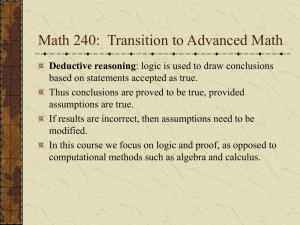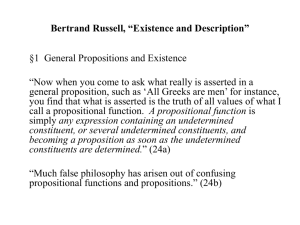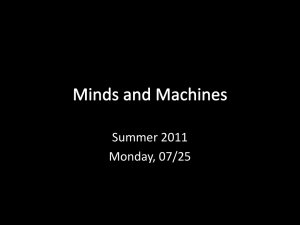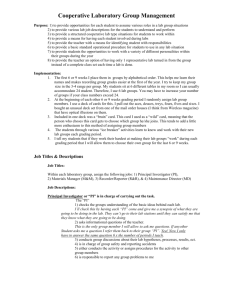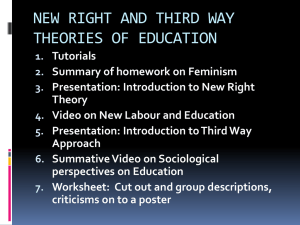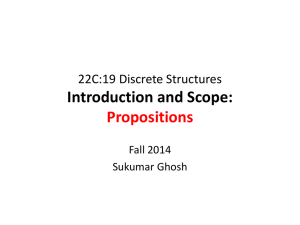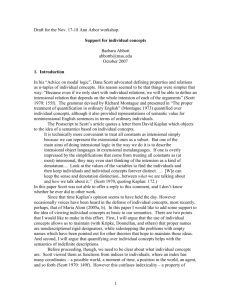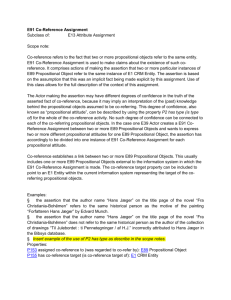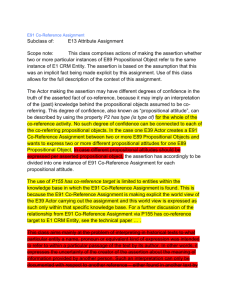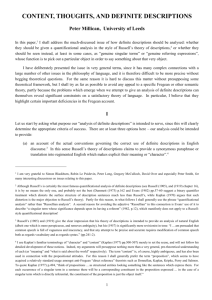Russell`s Theory of Descriptions
advertisement
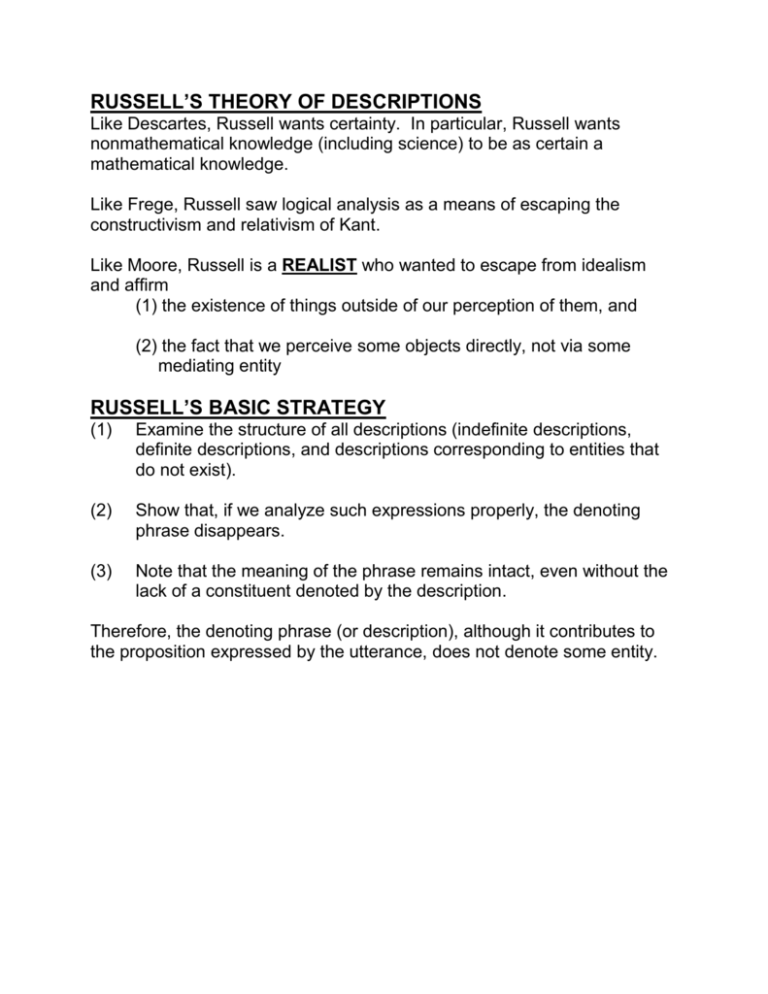
RUSSELL’S THEORY OF DESCRIPTIONS Like Descartes, Russell wants certainty. In particular, Russell wants nonmathematical knowledge (including science) to be as certain a mathematical knowledge. Like Frege, Russell saw logical analysis as a means of escaping the constructivism and relativism of Kant. Like Moore, Russell is a REALIST who wanted to escape from idealism and affirm (1) the existence of things outside of our perception of them, and (2) the fact that we perceive some objects directly, not via some mediating entity RUSSELL’S BASIC STRATEGY (1) Examine the structure of all descriptions (indefinite descriptions, definite descriptions, and descriptions corresponding to entities that do not exist). (2) Show that, if we analyze such expressions properly, the denoting phrase disappears. (3) Note that the meaning of the phrase remains intact, even without the lack of a constituent denoted by the description. Therefore, the denoting phrase (or description), although it contributes to the proposition expressed by the utterance, does not denote some entity. INDEFINITE DESCRIPTIONS Claim 1: Indefinite descriptions do not contribute constituents to propositions. That is, there is no part of the proposition that is denoted by the description. Claim 2: Sentences containing indefinite descriptions do not have the same form as sentences containing names. In particular, they are not of subject-predicate form. Claim 3: Sentences containing indefinite descriptions are unlike sentences with proper names in that they do not attribute a property of the predicate to a subject picked out by the name. ANALYZING THE SEMANTIC STRUCTURE Expression Type (1) The article “a” Semantic Type A propositional function that inputs two propositional functions and produces a proposition that is TRUE if and only if there is at least ONE individual that outputs TRUE in both of the propositional functions in the sister nodes. (2) The description (little girl) A propositional function, from Individuals to propositions. (3) The predicate (is sleeping) A propositional function, from Individuals to propositions. The function yields a value of TRUE if and only if both inputs yield proposition that is true for one individual. NOTE: These are very similar to the three elements that sentences with quantifiers have. In fact, the only difference lies in the first element, such that expressions with descriptions have articles (‘a’ or ‘the’) and expressions with quantifiers have quantifiers (such as “all,” “some,” and “none”). “A little girl is sleeping”. expresses the proposition that there is at least one entity such that that entity is a little girl and that entity is sleeping. This represents the bare bone information that the audience must grasp to understand the utterance. BACK TO DEFINITE DESCRIPTIONS The only difference between indefinite descriptions and definite descriptions is the article, “a” vs. “the.” So it should come as little surprise that Russell’s analysis of definite descriptions is almost identical to his analysis of indefinite descriptions. What information does ‘the’ convey that ‘a’ does not? Given a description preceded by an ‘a’ the description merely claims that there is at least one entity that meets the conditions specified by the two propositional functions. In contrast, the article ‘the’ specifies that there is one and only one entity with the description given. As a result, there are two claims instead of one. And the semantic tree needs to show the conjunction of those claims. Expression Type (1) The article “the” Semantic Type A propositional function that inputs two propositional functions and produces a proposition that is TRUE if and only if there is only ONE individual that outputs TRUE in each of the propositional functions in the sister nodes. (2) The description (little girl) A propositional function, from Individuals to propositions. (3) The predicate (is sleeping) A propositional function, from individuals to propositions
